Audrey (aka Skipper) has sewn for decades, and she has five different sewing machines that she uses for various projects. A few years back, when we decided to sew our own sails and boat covers, she knew she would need a machine suited for working with thicker fabric and heavier thread. On the recommendation of a sailor friend, we bought a Sailrite Ultrafeed LSZ-1 walking-foot sewing machine and have ever since been very pleased with its performance. The LSZ-1 does both straight stitching and zigzag, which is used in sailmaking and repair; the Ultrafeed also comes in a straight-stitch-only model, the LS-1.
Both models have a walking foot, which pulls the top of the fabric at the same time as the feed dog pulls the bottom, ensuring even stitching and fabric alignment. This is a marked advantage over an ordinary sewing machine where only the bottom layer of fabric is pulled by the teeth of the feed dog. That may be fine for sewing a few layers of common fabrics, but not for sewing sails or boat covers where the fabrics are slippery or so thick that the top layers don’t keep up with those on the bottom. The walking foot also reduces the amount of seam tape or the number of fabric clips or pins required to hold the fabric together but gum up machines and slow sewing.
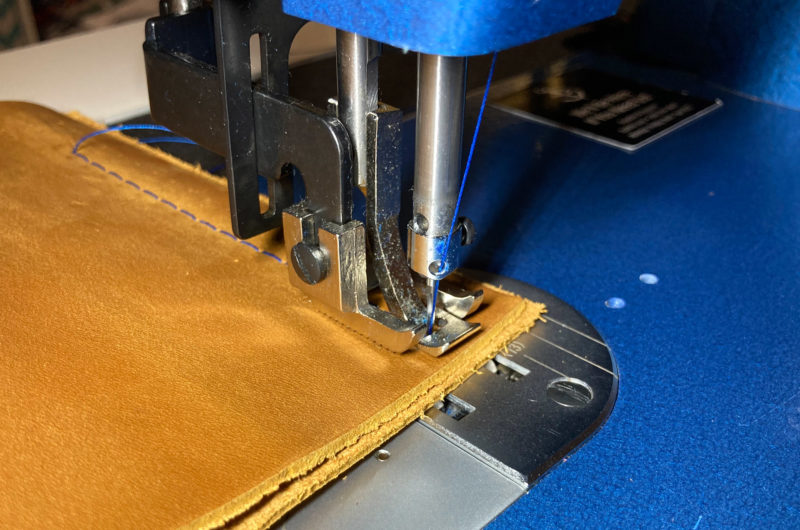 Photographs by the authors
Photographs by the authorsThe walking foot maintains pressure on the work at all times. Here the inner presser foot is holding two layers of leather down to keep them from lifting as the needle rises. When the needle is clear, the outer presser foot works in tandem with the feed dog below to advance the material being sewn.
The walking foot has two parts: an inner presser foot that holds the fabric pieces in place while the needle stitches them, and an outer presser foot with two rows of teeth that grip the fabric directly above the feed dog’s teeth, pulling the fabric ahead up to 6mm when the needle is above them. The inner walking foot alternates with the outer walking foot and presses down on the fabric, compressing the layers so the stitch is tight, and holding the fabric against the needle plate until after the needle has withdrawn and the outer pressure foot has descended. A larger-than-usual opening in the needle plate reduces needle strikes and allows for a 5mm-wide zigzag stitch on the LSZ-1. The long and wide zigzag stitch is important for sailmaking as it can move with the cloth as the sail stretches in strong wind.
The Ultrafeed has a needle bar stroke of 1-11/32″ (34mm), twice that of some home sewing machines, and 3/8″ clearance between the raised walking foot and the needle plate, also twice that of a home machine, and can sew almost anything that fits in that space. It can sew multiple layers of heavyweight fabric, leather, or canvas, which is essential when stitching corners where fabric gets folded for overlapping seams or reinforcing layers are added in places such as the corners of sails. We’ve tested the Ultrafeed on 16 layers of canvas, as much as we could fit under the presser foot, and had no trouble sewing it.
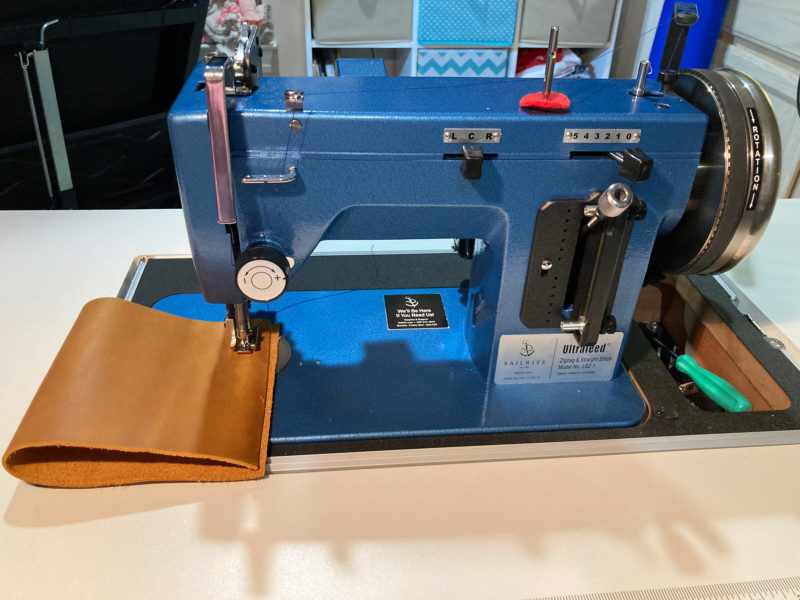
The base of this Ultrafeed LSZ-1 is set in a sewing table to provide a broader flat surface to support the work.
Many industrial sewing machines are equipped with a walking foot, but the Ultrafeed machines are affordable and find just the right balance of power, reliability, precision sewing, and portability for working multiple layers of a wide range of fabrics. A lightweight home machine’s motor and presser foot can be quickly overwhelmed, while industrial machines may be too heavy and too fast to do intricate work. The Ultrafeed’s walking foot is the perfect size feed for sewing seams in sailcloth and it has adjustable tension for the presser foot, thread, and bobbin to handle jobs from 0.75-oz spinnaker fabric up to several layers of 20-oz Sunbrella or leather. The 49-lb machine has a good weight that holds it steady when working with heavy fabric, is easy to thread and to wind bobbins, sews uniform stitches, is fast, smooth and quiet, and can handle the thickest jobs you’ll encounter sewing sails and outdoor equipment. If one machine that does just straight and zigzag can handle all of your sewing tasks, the Ultrafeed LSZ-1, with its adjustments for presser foot, thread and bobbin tension, will do light sewing for household chores as well as the heavy work for boat-related projects.
The Ultrafeed cost more than our other machines, but it quickly paid for itself after we made a sail for our Penobscot 14 skiff, repaired several sails, and constructed three boat covers. Cost sharing may be an option for small clubs like TSCA chapters or groups of like-minded do-it-yourselfers. Skipper isn’t one who would use a feather or a frying pan to pound a nail, and she found the Ultrafeed LSZ-1 is just the right tool for our small-boat sewing projects.![]()
Audrey and Kent mess about in small boats in the bays and rivers of northwest Florida. Their adventures are logged at their blog, Small Boat Restoration.
The Ultrafeed sewing machines are available from Sailrite. The LS-1 retails for $795, LSZ-1 for $895.
Is there a product that might be useful for boatbuilding, cruising, or shore-side camping that you’d like us to review? Please email your suggestions.
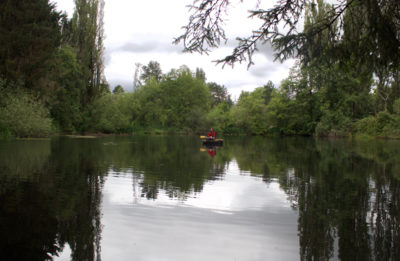
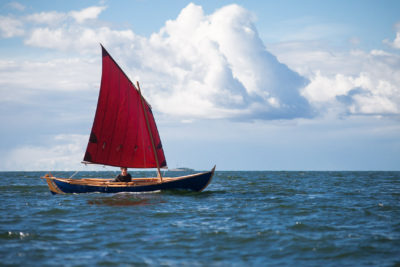
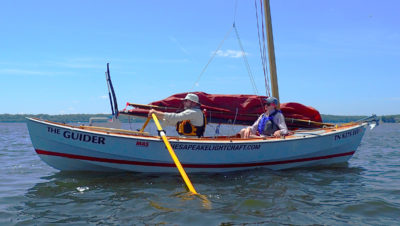
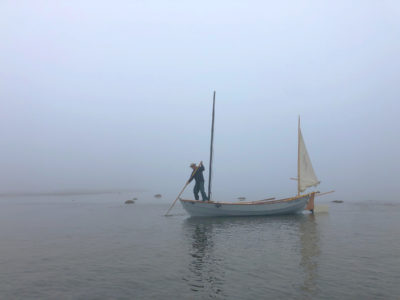
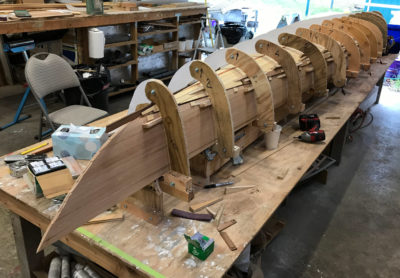
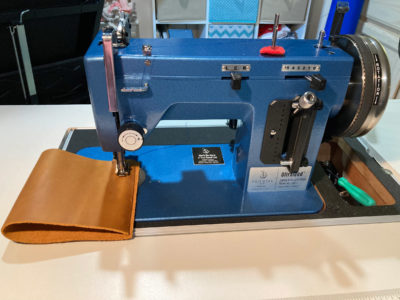
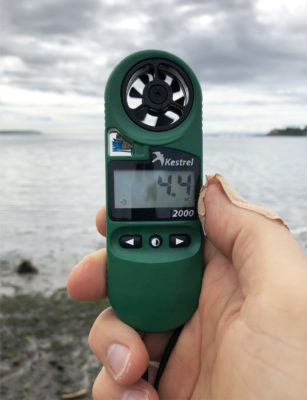
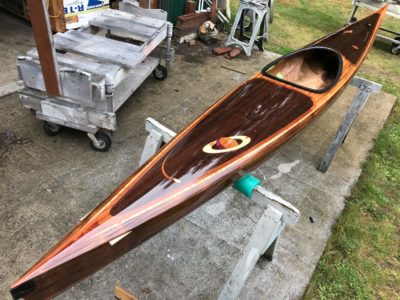
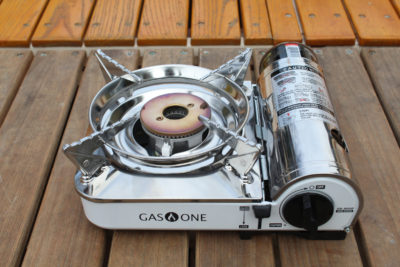
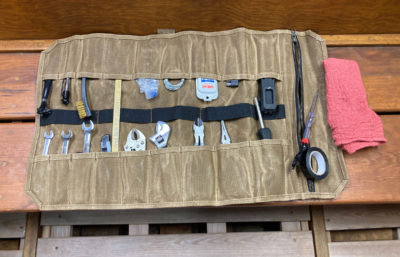
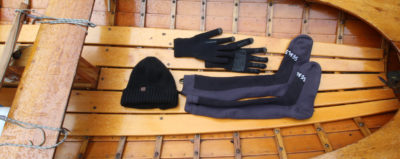
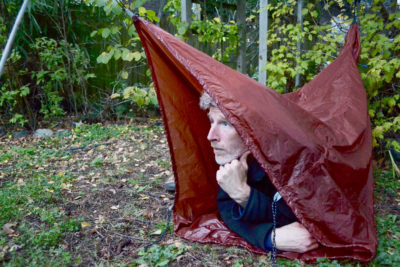
Yes, the LSZ-1 is a great machine, I love it, but it is good to understand that it is not a general purpose sewing machine. It is rugged and will take a beating – sailmaking, covers and upholstery are its strengths – but it’ll make mincemeat of softer fabrics. On the other hand, my wife’s Bernina, definitely a more refined machine, goes to pieces when pushed to handle heavy jobs. She has exacted a promise that from now on I will only use it for light work, that is, sewing and repairing her clothes.
Had an LSZ-1 for many years. The one drawback I’ve found is that none of the sewing-machine mechanics in my neck of the woods will work on it.
I have a Sailrite LSZ-1 and a Sailrite Big and Tall machine. Sailrite has some great instructional videos on servicing and timing their machines, so I have never had need of an outside mechanic. The LSZ-1 has better throat space than household machines. This is important for large rolls of fabric to pass through the machine. You still need to plan your order of operations carefully on large pieces, like sails and boat covers. The Big and Tall has about 18.5″ of throat space, about double the capacity of other machines. A recent project was joining very wide pieces of wrestling-mat cover (12′ x 16′ pieces of vinyl-coated canvas fabric) for a martial-arts club. We had about 285 pounds of fabric on four tables with three helpers to wrangle that job through the machine.
Having “been there and done that,” I can tell you that you should stay away from the exact look-alike clones of the Sailrite. It’s not that they don’t work. They do and will often take excellent Sailrite accessories like the “Monster Fly wheel,” but the clones don’t last. If you get into maintenance you will see lots of terrible small castings made of crumbling pot metal. I have one clone that I can barely keep running by using real Sailrite replacement parts. It’s not worth it. Don’t go there.
The article and following comments helped me decide if I should try fixing zippers on our Bimini with my Bernina. I already struggle with my Bernina with some projects with multiple layers (even with the walking foot), so I wasn’t confident that it could handle the multiple layers of Sunbrella fabric and I didn’t want to break the machine. I love my Bernina! I’m waiting for the Sailrite to arrive to fix the Bimini- the first of many projects to come. Thanks for the commentary. Happy Boating!
Nice comments.
Have had my Sailrites, LSZ 1 and Fabricator for around 7 yrs.
Great company, great machines, great work horses!
Do you have this Sailrite machine that has many stitches? How can I get this machine in my country, South Africa
Middleburg Mpumalanga? I will be happy for the help for me.